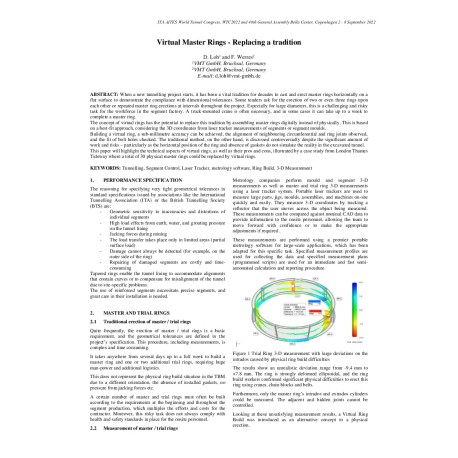Cart
0
0
No document
0,00 €
Total
Document successfully added to your shopping cart
Quantity
Total
There are 0 items in your cart.
There is 1 item in your cart.
Total documents
Total shipping
To be determined
Total
Search & filter
Search for a publication
Search & filter
Viewed documents
Virtual Master Rings - Replacing a tradition
Virtual_Master_Rings_-_Replacing
When a new tunnelling project starts, it has been a vital tradition for decades to cast and erect master rings horizontally on a flat surface to demonstrate the compliance with dimensional tolerances. Some tenders ask for the erection of two or even three rings upon each other or repeated master ring erections at intervals throughout the project. Especially for large diameters, this is a challenging and risky task for the workforce in the segment factory. A truck-mounted crane is often necessary, and in some cases it can take up to a week to complete a master ring. The concept of virtual rings has the potential to replace this tradition by assembling master rings digitally instead of physically. This is based on a best-fit approach, considering the 3D coordinates from laser tracker measurements of segments or segment moulds. Building a virtual ring, a sub-millimetre accuracy can be achieved, the alignment of neighbouring circumferential and ring joints observed, and the fit of bolt holes checked. The traditional method, on the other hand, is discussed controversially despite the significant amount of work and risks – particularly as the horizontal position of the ring and absence of gaskets do not simulate the reality in the excavated tunnel. This paper will highlight the technical aspects of virtual rings, as well as their pros and cons, illustrated by a case study from London Thames Tideway where a total of 30 physical master rings could be replaced by virtual rings.




